
TAGTIK NEWS - TO THE POINT
Toyota Land Cruiser review: a huge all-rounder

A victim of its own success, the new generation of the Toyota Land Cruiser took some time to arrive in Europe. We were able to test the 1st Edition version with its round headlights. A true 4x4 with a 4-cylinder diesel engine, a rigid rear axle, and plenty of buttons.

The new generation of the Toyota Land Cruiser 250 refers to the mythical Series 70 of 1984, especially in this launch version with round headlights, unfortunately sold out. Since then, the catalog proposes the Land Cruiser with a different, less nostalgic look. This all-terrain vehicle is 4.92 m long, 1.98 m wide, and 1.94 m high. Its size means it cannot be driven in certain underground parking lots in city centers. This is the only terrain that will block this somewhat anachronistic car.

Raw and uncomplicated
After using the step and grab handle to climb aboard (and I mean that literally), you discover a cockpit that's both digital and rugged. There's a touch of modernity with the screens, and the plastic exudes uncompromising robustness. Starting the engine is inevitably noisy, given the power under the hood: a 2.8-liter four-cylinder diesel producing 204 hp and 500 Nm of torque, paired with an eight-speed Direct Shift automatic transmission to drive all four wheels. A 2.8-liter 48V mild-hybrid variant will soon be added to this traditional combustion engine solution.
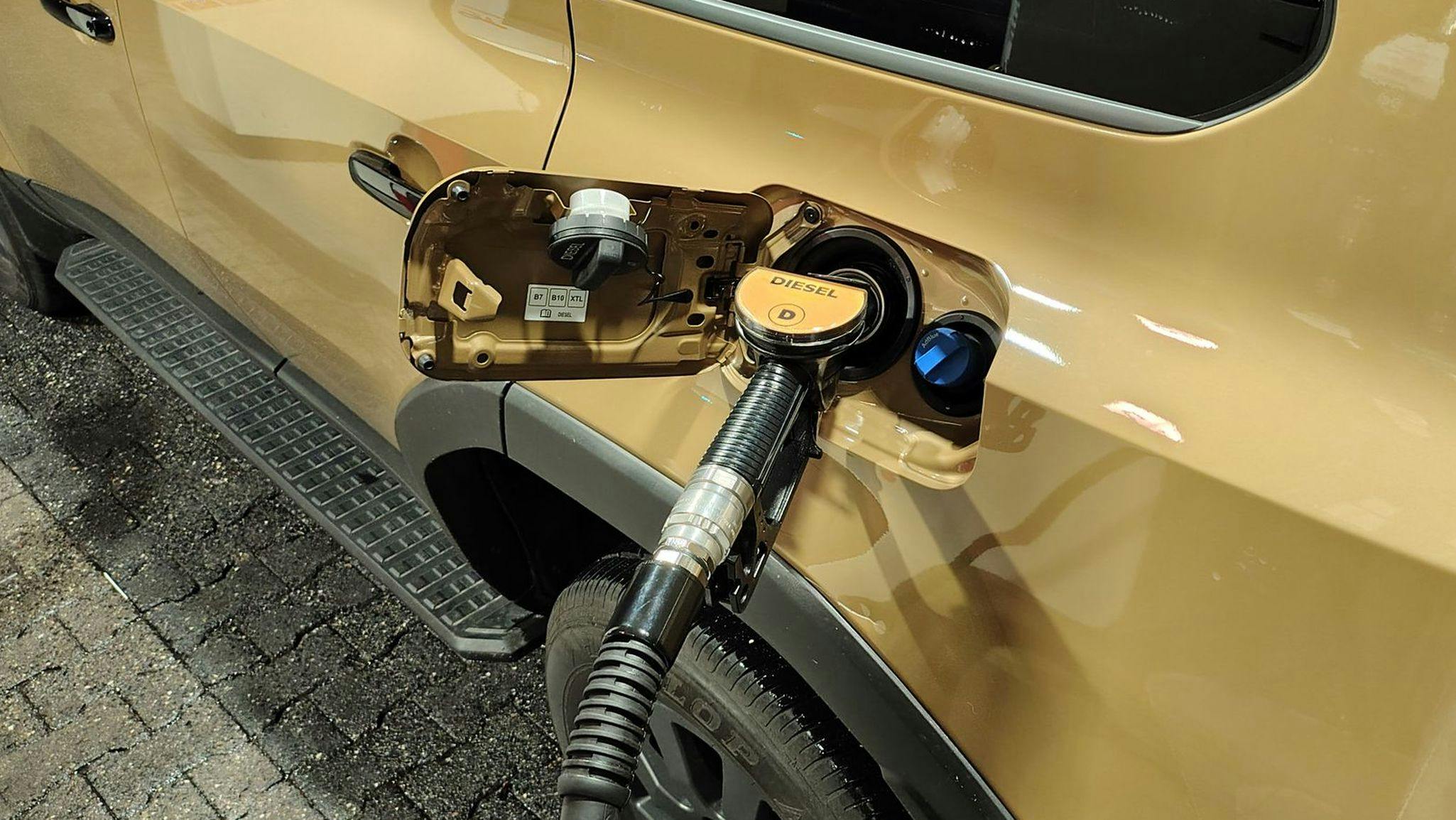
For now, our vehicle will be running solely on diesel as we explore the Belgian countryside and the country's highways. This journey is an exploration of the Land Cruiser's performance on long trips and short rural excursions. Nearly 800 km in a week resulted in an average fuel consumption of 10.6 L/100 km. Drives on unpaved roads and through congested city traffic negatively impacted the final figures. In urban traffic jams, with the constant acceleration and deceleration, consumption climbed to nearly 15 L/100 km, without using Eco mode.
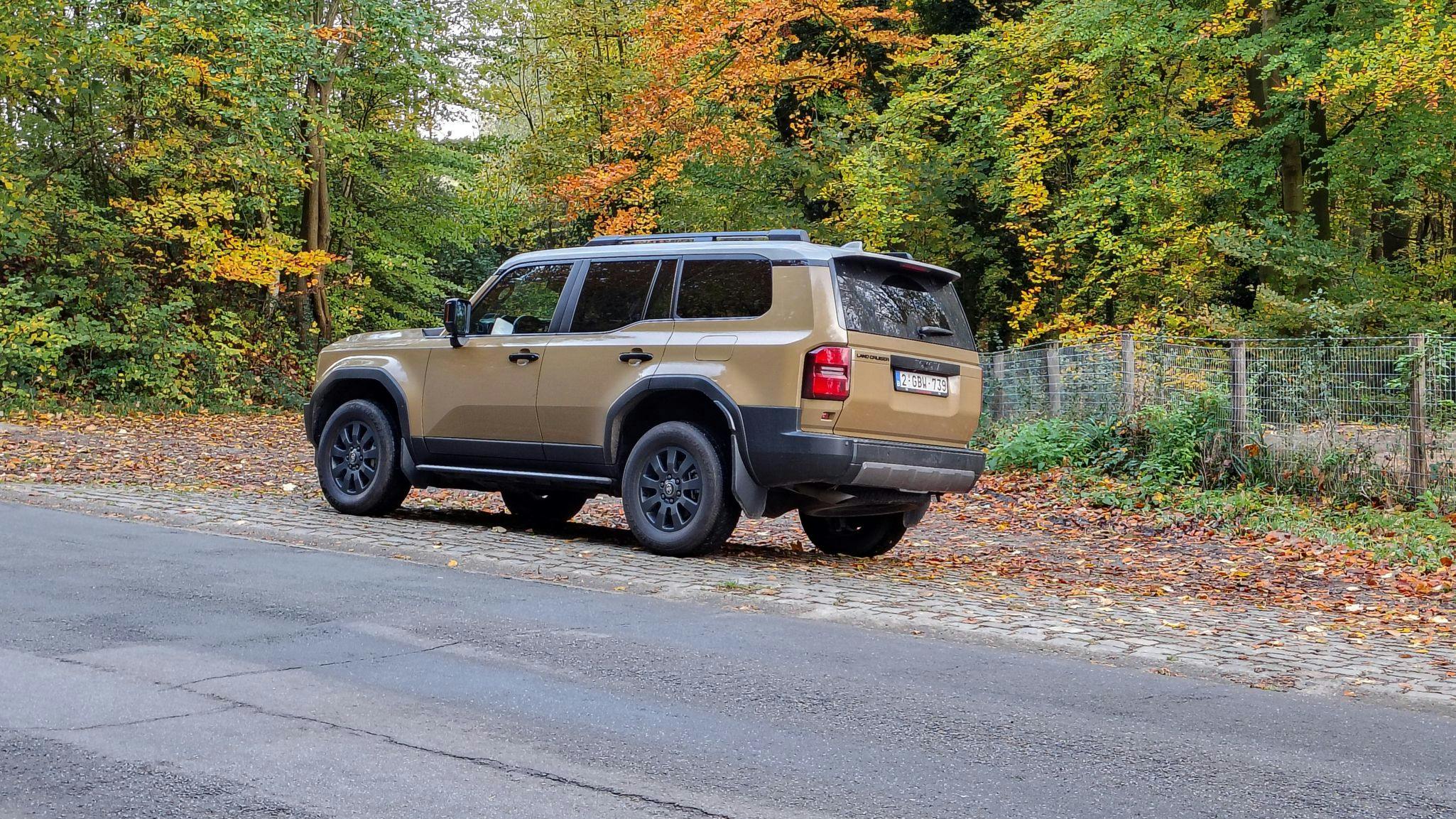
However, at a constant speed on the motorway, it's possible to stay below 9 L/100 km, and even 7.9 L/100 km at 90 km/h. This translates to a range of between 600 km and 1000 km with an 80-liter tank. During our test drive, the Land Cruiser activated the DPF (diesel particulate filter) regeneration process three times to prevent clogging. In addition, 17 liters of AdBlue are on hand to reduce emissions. This engine is obviously not a friend to accountants and tax officials, especially in France. The CO2 emissions penalize – unfairly? – our vehicle. Moreover, with diesel prices no longer as advantageous as they once were, filling up the tank will be a significant expense.
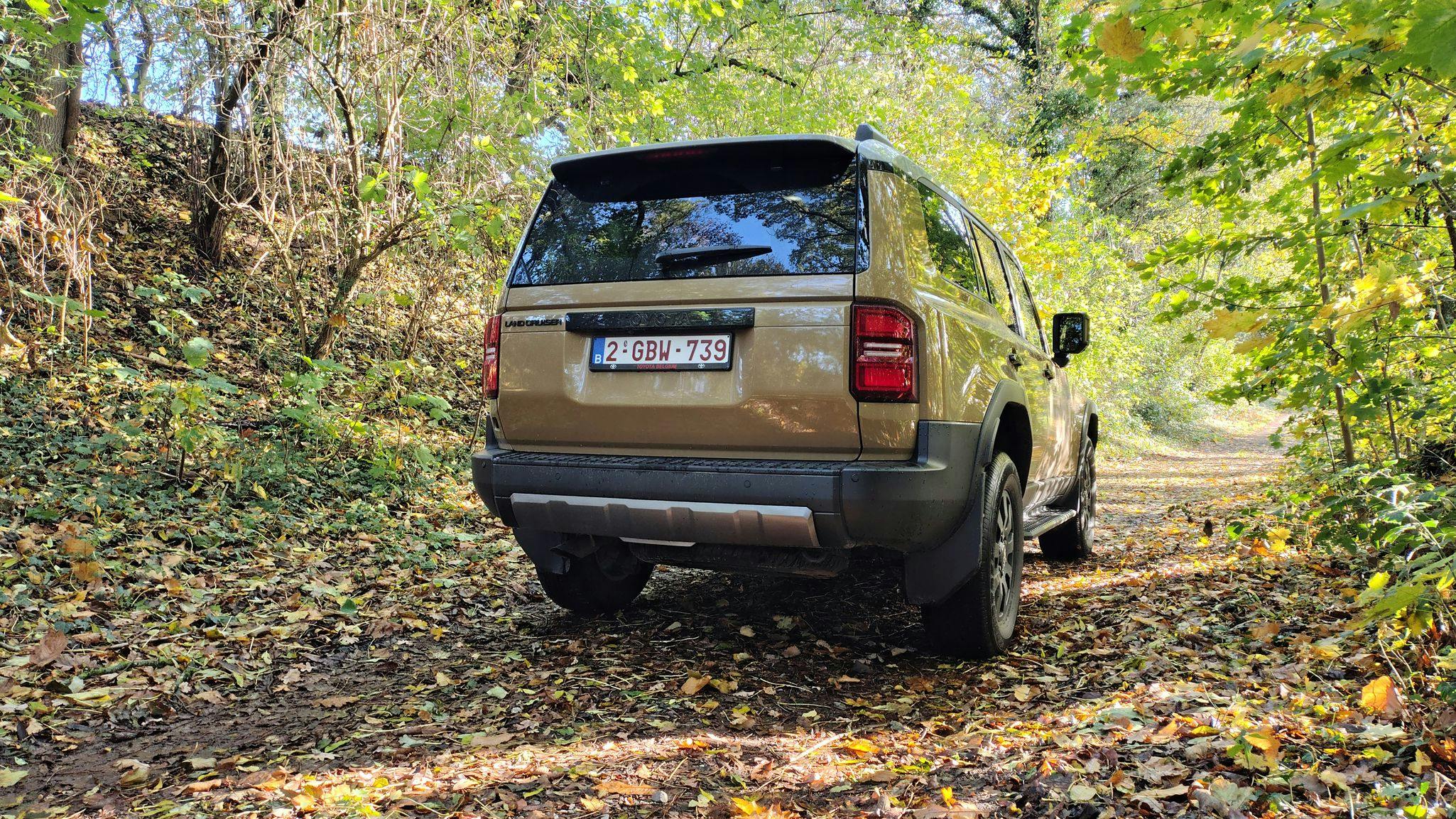
The Game of Compromise
The Land Cruiser's responsiveness is a far cry from that of the new electric or electrified 4x4s. Here, the vehicle needs a good push to get going. It vibrates and resonates at first. After that, it moves along nicely once the engine purrs, thanks to well-managed transmission. When you need to unleash its power, the turbodiesel engine wakes up and makes its presence known. Even more so in Sport mode, which raises the engine revs for more dynamic acceleration. It's a shame that the ergonomics of the ADAS (Advanced Driver Assistance Systems) somewhat spoil the experience. To comply with European legislation, Toyota had to install the speed alert. However, disabling it is a real hassle navigating the digital instrument cluster menus. In the end, you give up and simply ignore the intrusive alerts.
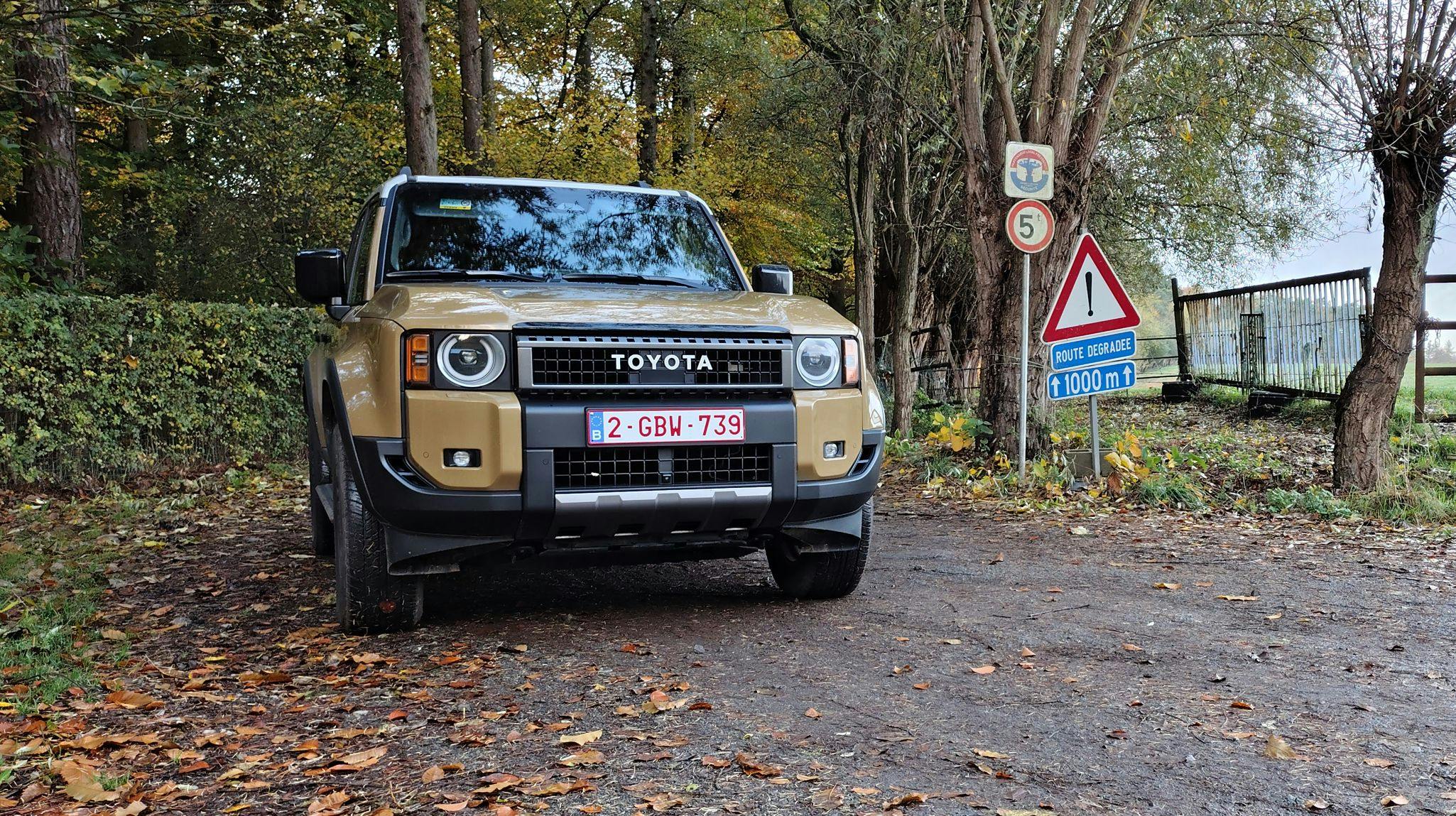
The chassis (ladder frame, in particular) is remarkable, given its off-road capabilities. On long stretches of road, the Toyota proves to be forgiving and comfortable, despite the rigid rear axle. Body roll is minimal. The overall feeling is one of incredible filtering of imperfections. In Belgium, it's a real luxury to be able to absorb potholes without any jarring jolts. Despite the driving position and the vehicle's size, it's easy to handle on its large 18-inch M+S tires. The electric power steering makes maneuvers precise. It didn't give us the impression of being unpredictable on winding roads either.
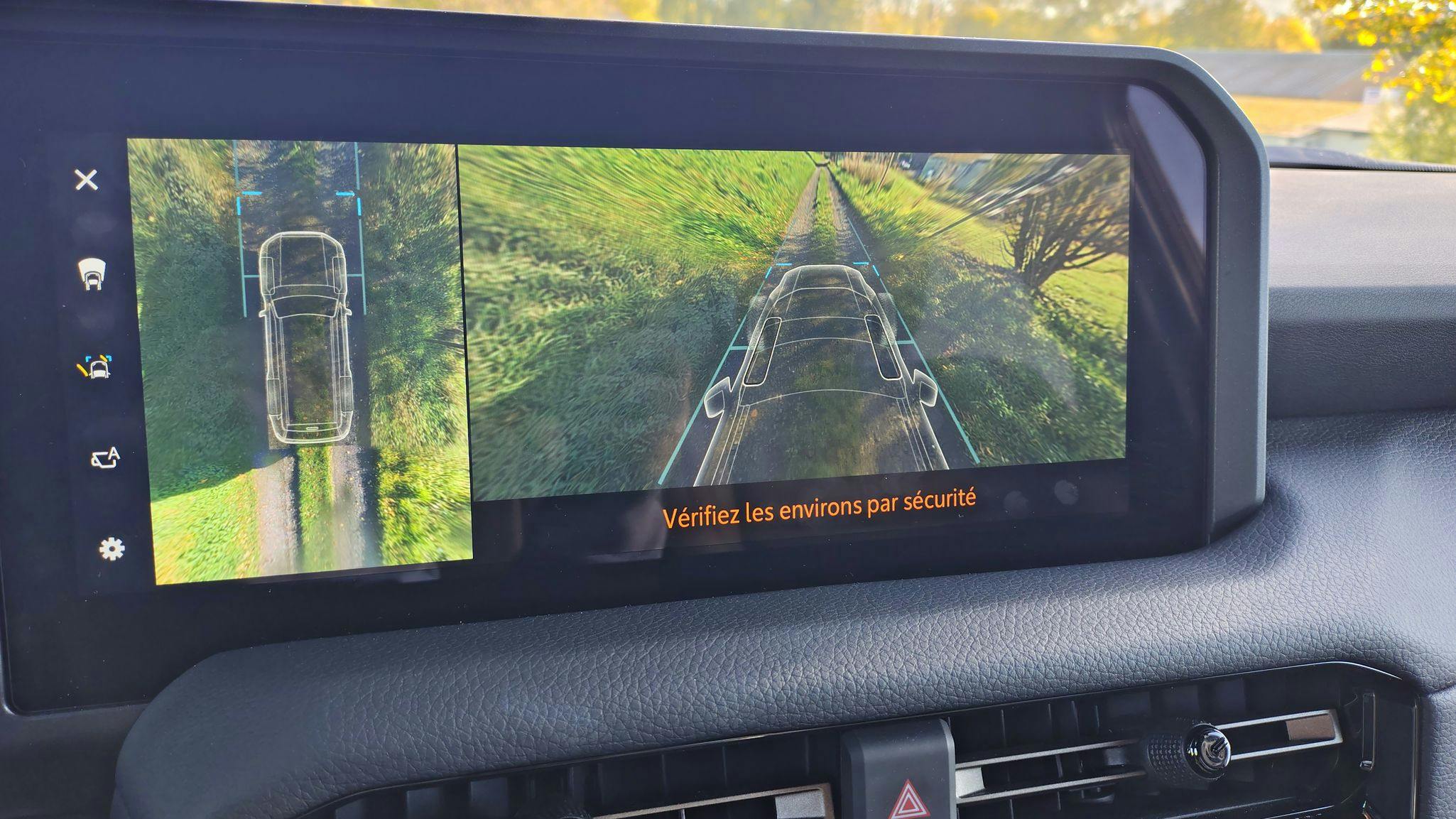
Cameras everywhere
As soon as the vehicle starts moving at low speed, a panoramic bird's-eye view appears on the 12.3-inch central screen. Very useful off-road, obviously, but also for parking. If all cars had such a good image on the central screen, allowing you to see exactly what's happening under the floor, there would be fewer scratched rims. Let's leave the city behind and tackle the rocks, mud, and steep paths.

The Belgian countryside we traversed during our test drive didn't really put the 4x4 to the test, apart from the torrential downpour at the end of October. There wasn't even a need to use the gear selector to engage the low-range L4 gearbox. In H4, it already handled the wet and muddy, leaf-covered tracks with ease. But if necessary, the Land Cruiser can take you anywhere with ease. To do this, you need to understand the different MTS, DAC, and Crawl buttons. Crawl Control is an electronic differential system. The DAC mode allows the vehicle to control braking on steep descents. MTS (Multi-Terrain Select) is an automatic system that manages the transmission and forward movement based on a terrain analysis.
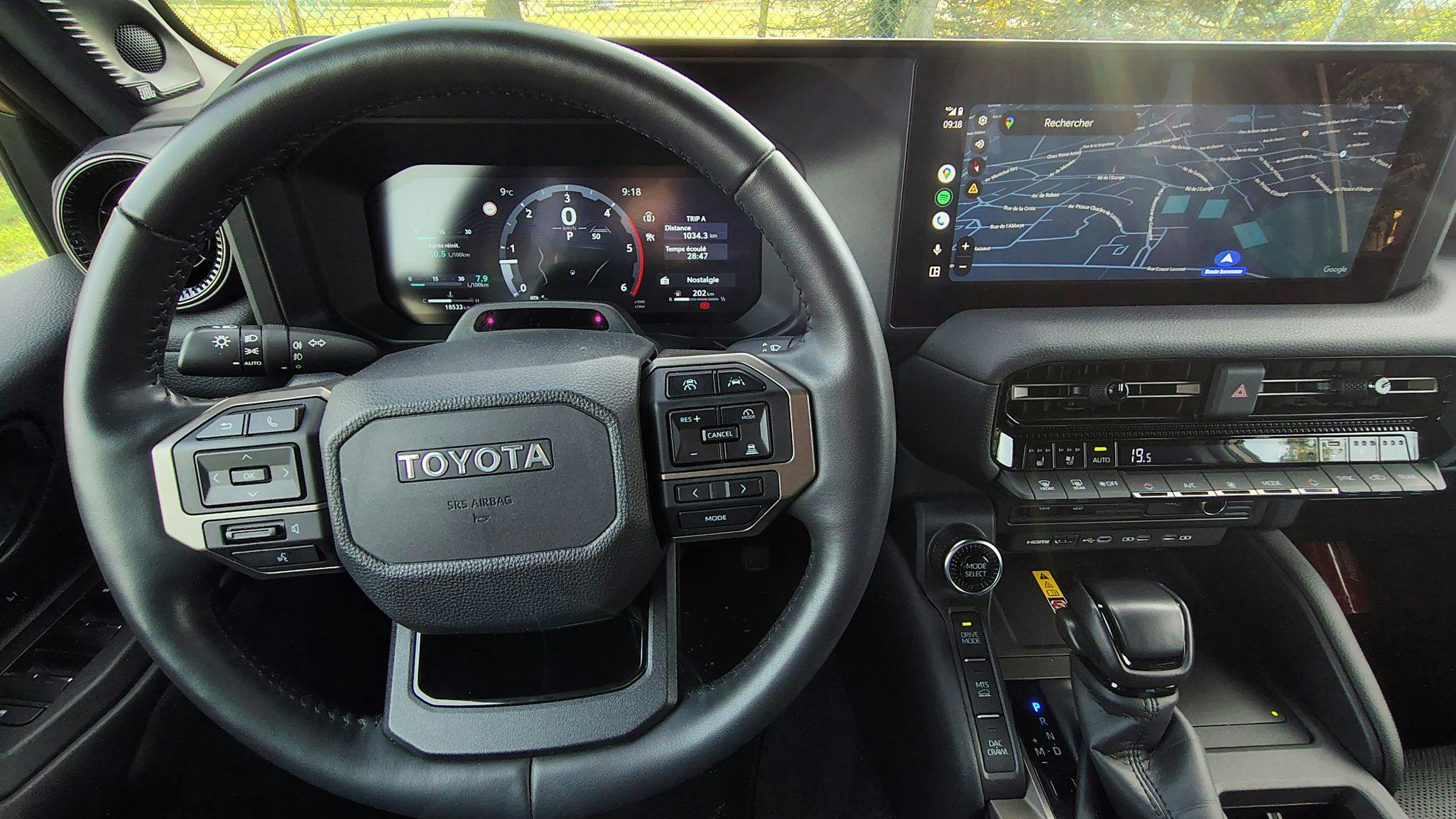
Off-roader
The driver can assist the MTS system by indicating the type of surface the 4x4 is traveling on, essentially taking control. Furthermore, everything can be manually activated or deactivated, from the transmission to the differential. This explains the array of controls on the center console and the large gear selector. Do as you please.
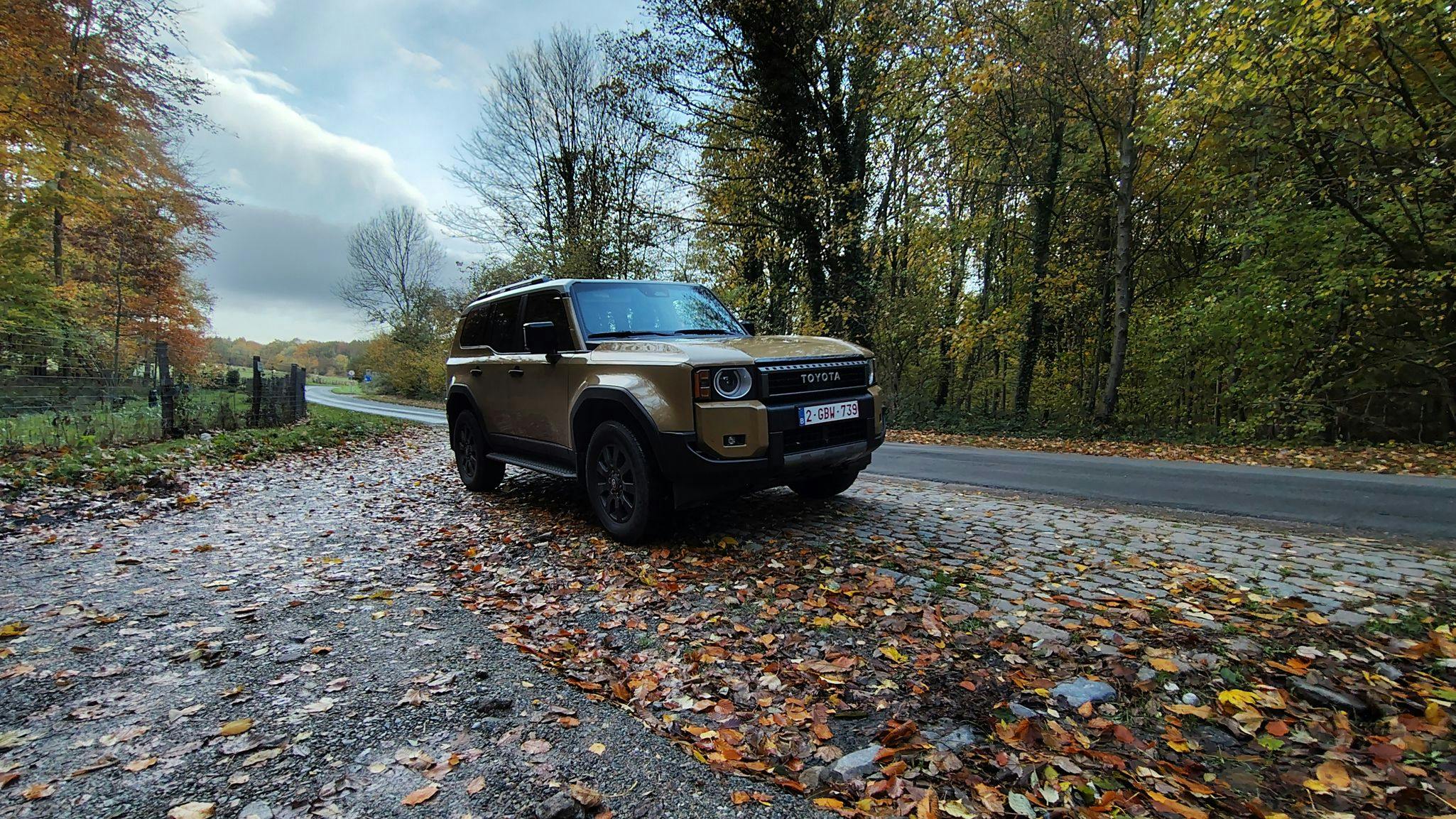
Another button that will need frequent use is the automatic high beam switch. It tends to be overly bright, especially in town. Therefore, to avoid dazzling oncoming traffic, it should be deactivated in built-up areas or on well-lit roads. LED headlights are also very effective when darkness has fallen on your route or in the middle of nowhere.

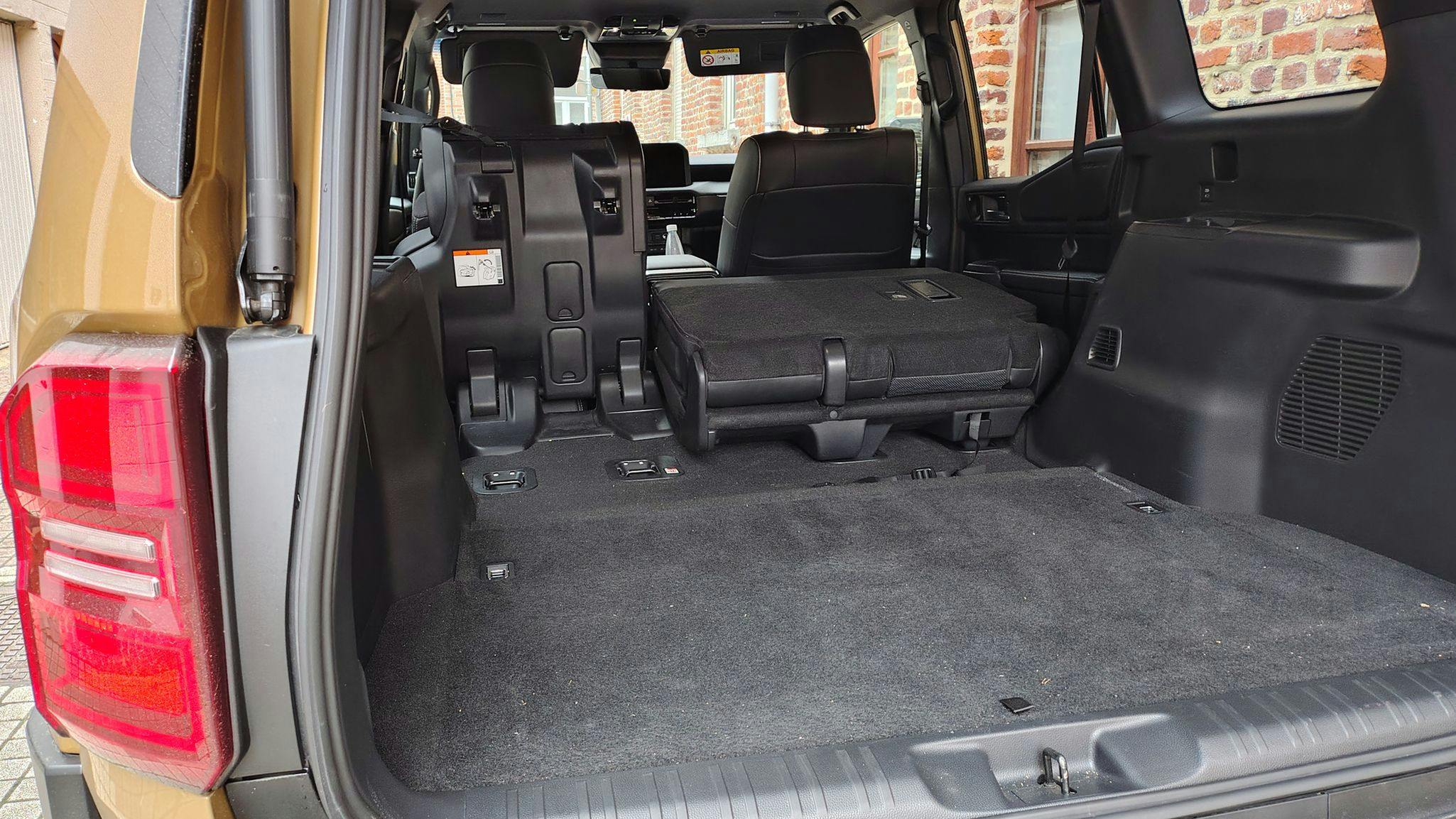
The Toyota Land Cruiser doesn't just take you anywhere, as long as the roof isn't too low. It can also transform into a versatile cargo vehicle. The second row of seats folds down. This gives our 5-seater version a cargo capacity of 640 liters under the parcel shelf. With the seats folded down, this expands to a maximum of 1,934 liters.

A 7-seater version is also announced, but then the trunk only offers 130 liters of available space when everyone is on board! To avoid having to deploy the power tailgate, its window can open automatically for easy access to a jacket, utensil, or bag. As for towing capacity, the Land Cruiser can pull up to 3.5 tonnes. Provided you have the correct license, since the vehicle itself weighs 2.3 tonnes.

Pricing
Don't bother looking for the round-headlight version featured in this test in a showroom, or at least not on the used market. The Land Cruiser was a victim of its own success, with stock selling out quickly. So, for a new model, you'll have the Land Cruiser with the less classic horizontal LED headlights. In Belgium, this model starts at €89,980 (November 2025), or €90,970 for the Sand Metallic color in the VX trim.
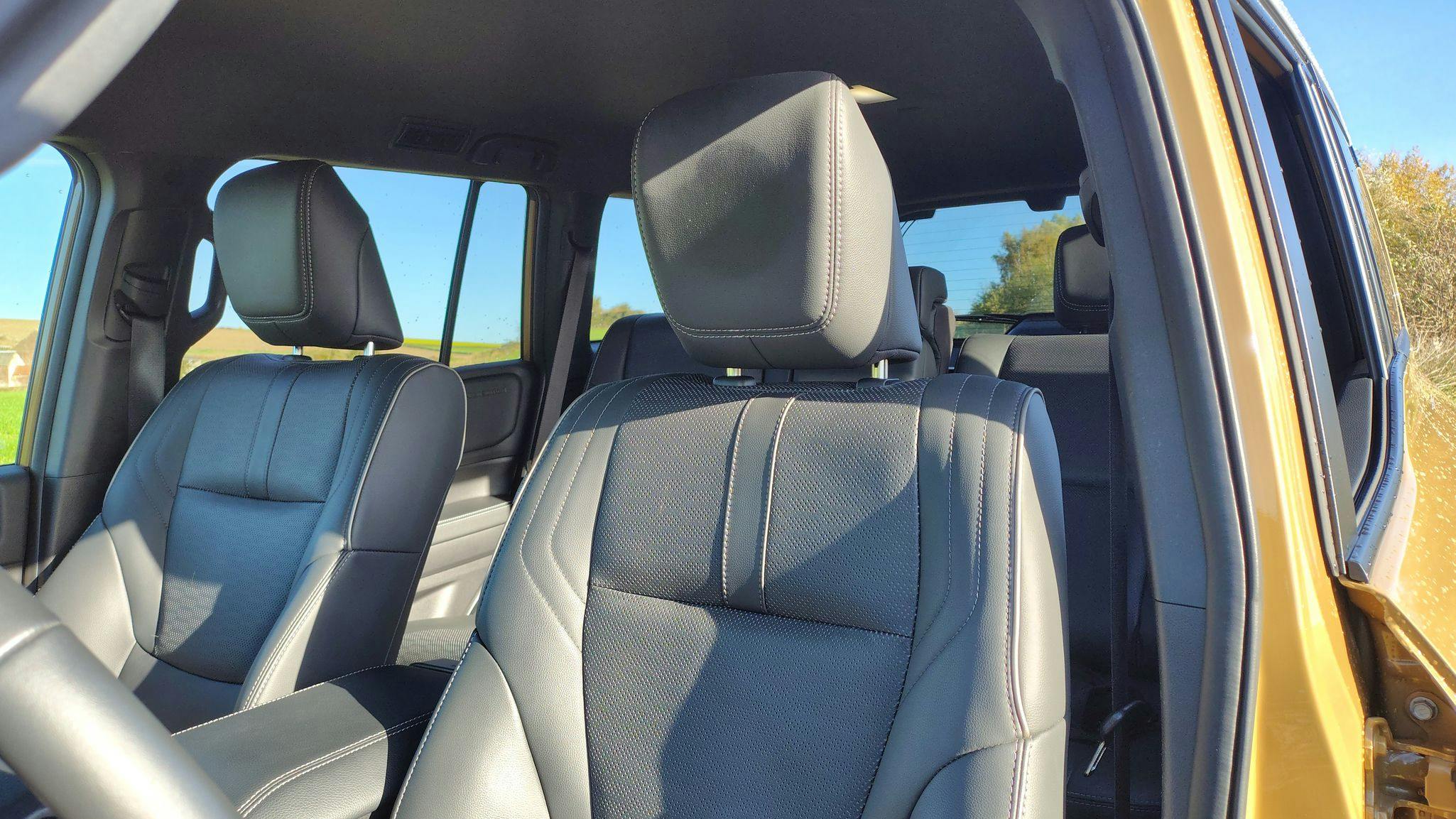
To get the sand colour, power seats, heated and ventilated front and rear seats, zoned climate control, head-up display, and (now) a panoramic sunroof, you need to choose the VX-L trim level, starting at €96,900 (€97,890 in sand color). A tow hitch costs at least €1,099. The third row of seats (7 seats) is a €1,090 option. All this comes with a 10-year warranty… Note that the TX option, priced at €77,020 for 2024, is no longer offered by the Toyota configurator. And then there are the taxes, such as the Belgian registration tax: €3,053.64 in Brussels, €8,635.45 in Wallonia, and €13,694.25 in Flanders for our model.
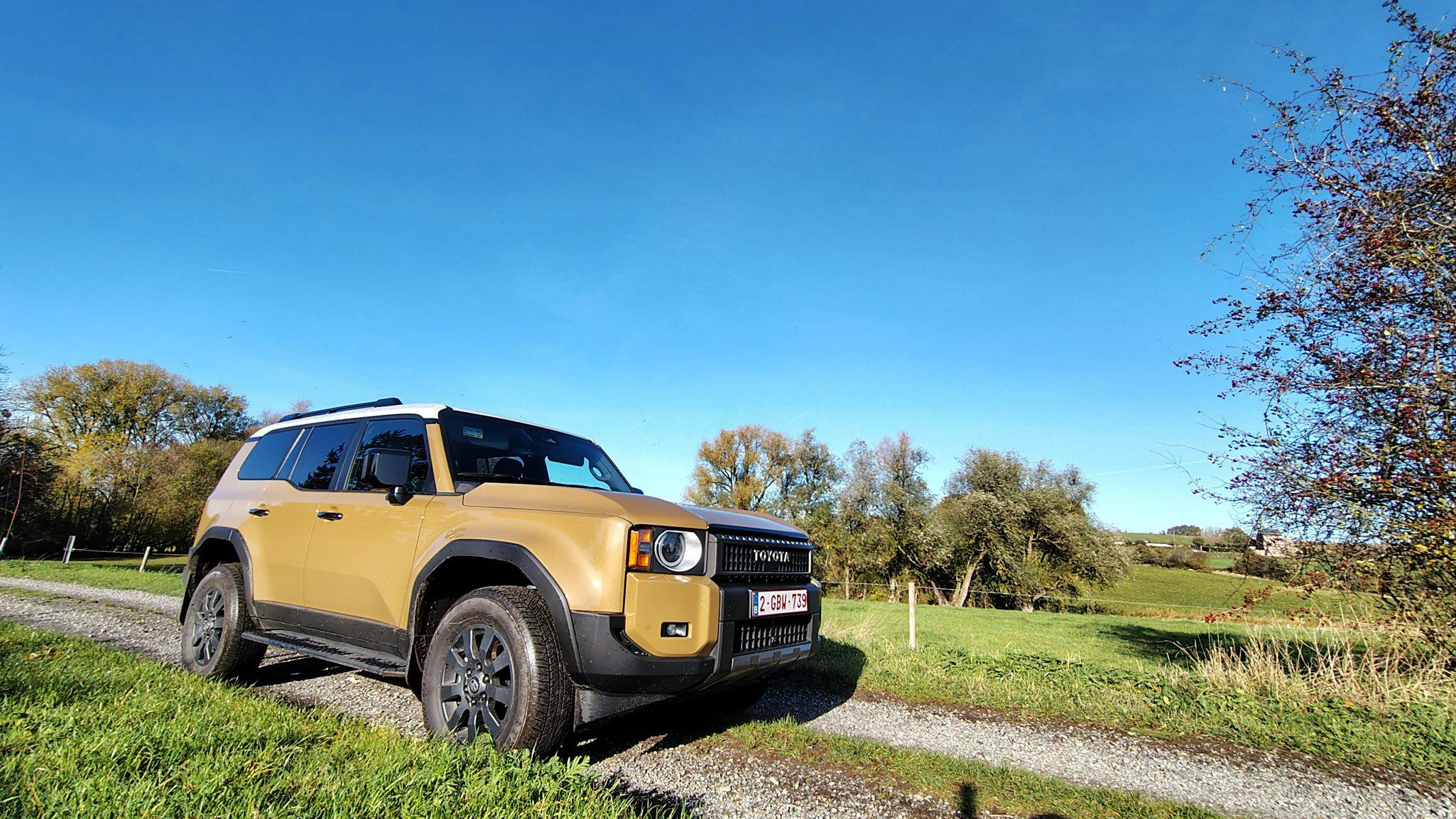
In Luxembourg, the Toyota Land Cruiser is offered starting at €87,010. The VX-L Sand Metallic is sold for €94,660. In France, this Japanese 4x4 is crippled by an exorbitant penalty of up to €70,000, added to the purchase price of €91,750 for a model similar to the one tested, but "while stocks last," as indicated on the Toyota France website.

In Switzerland, the price list starts at CHF 86,900. To find a similar variant to the Belgian VX-L, you would need to opt for the Land Cruiser Invincible, starting at CHF 92,800. With the Sand Metallic paint, the price is CHF 94,200. If you wish to add them, the third row of seats costs CHF 1,600 and the panoramic sunroof CHF 2,100.

The verdict
Going far, taking shortcuts through the countryside or over steep terrain, is no problem for the Toyota Land Cruiser. Incredibly comfortable on the road for a true 4x4 with permanent all-wheel drive, it is obviously capable of impressive feats in mud, snow, rocks, and sand thanks to its low-range gearbox and automated systems. Its architecture also contributes to its off-road performance. It will be of great service to those who need such a vehicle, while remaining welcoming, easy to drive, and versatile. However, it cannot hide the roughness of its diesel engine.
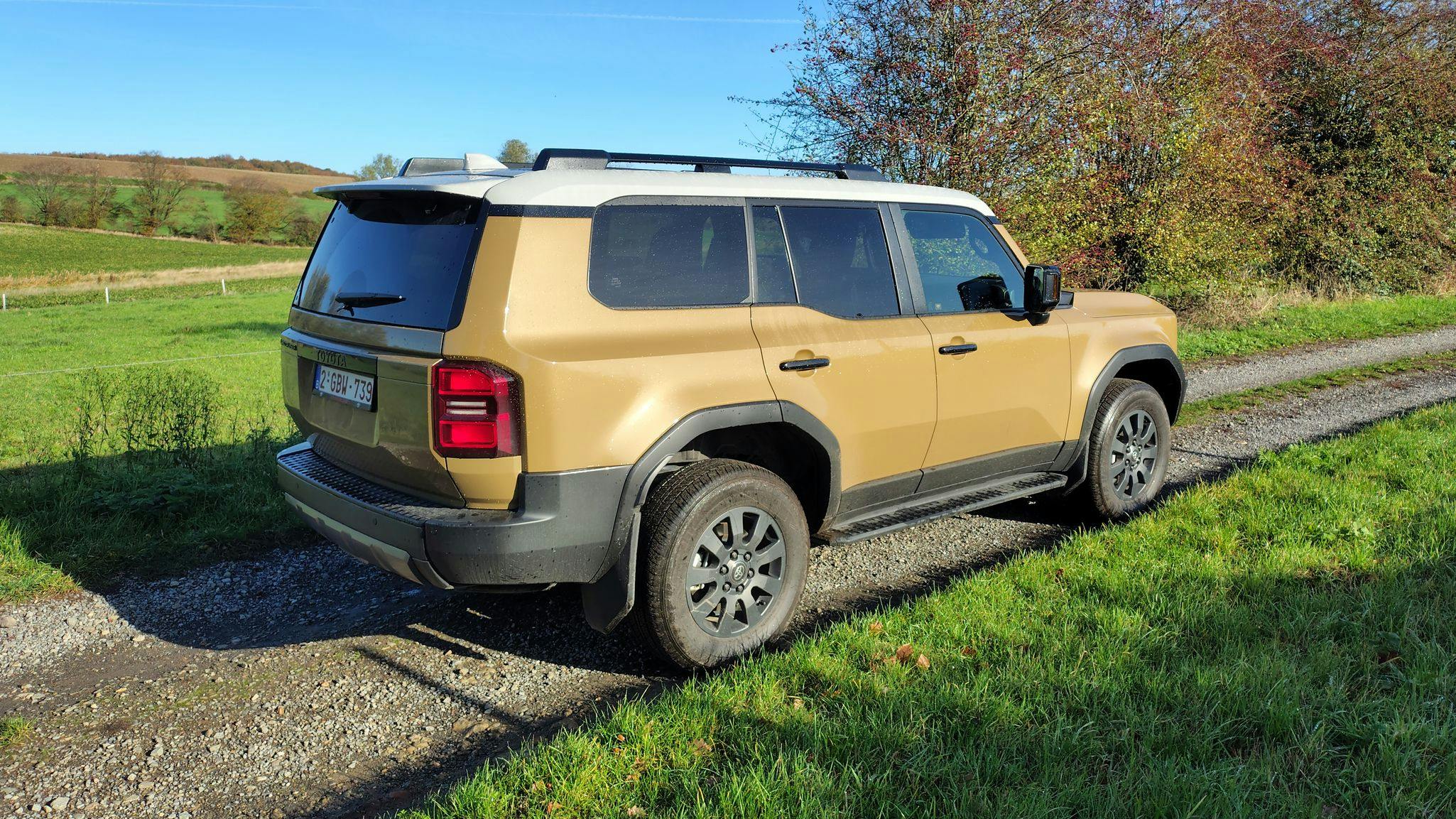
(Olivier Duquesne – Sources : Toyota – Inchcape – Photos : © Olivier Duquesne)
LATEST NEWS

Born on November 6th: Doug Sahm (Sir Douglas Quintet), the Tex-Mex rocker in all his forms

Born on November 5th: Peter Hamill and his inner labyrinths

Born on November 5th: Art Garfunkel, the forgotten half of Simon and Garfunkel

Born on November 5th: Ibrahim Maalouf, virtuoso trumpeter who mixes genres

Born on November 5th: Bryan Adams, the Canadian rocker who is also a photographer and yoga enthusiast

Born on November 4th: Chris Difford (Squeeze), poet of British everyday life
Quick links